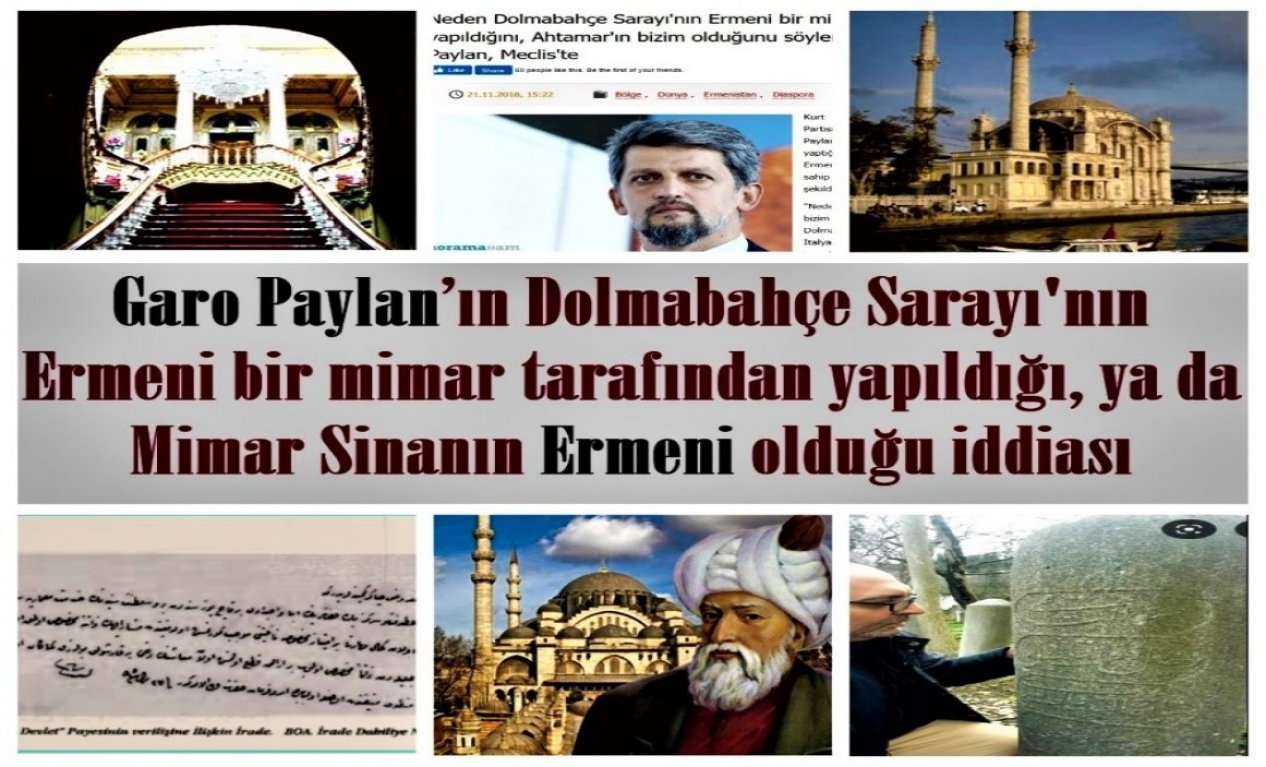
People's Democratic Party of Turkiye (HDP) Armenian Deputy Garo Paylan referred to the Armenian cultural heritage in Turkiye during the discussion of the Ministry of Culture and Tourism's budget in the Parliament and stated that the works of Armenians whose culture was confiscated were presented differently.
"Why don't we say that Dolmabahçe Palace is ours and Aghtamar is ours… We were taken to Dolmabahçe when we were at school, and the guide said, 'Italian architect Baliani built the palace.' I believed it, went back to school and learned that Dolmabahçe was built by the Armenian architect Karapet Balyan. There is such an understanding that can you imagine that an Italian architect is preferred to an Armenian architect? The manuscript of the famous masterpiece of architect Balyan has been preserved in many parts of Istanbul. Why do we deny it? Why don't we say Sultanahmet, Dolmabahçe Palace and Aghtamar are ours?
Karapet Palyan (1800-1866) was one of the palace architects of Sultan Abdülmecid. He was the architect of many historical buildings in Istanbul, such as the Sinan Fine Arts University building, Dolmabahçe Palace and the Holy Savior Armenian Hospital building." (source)
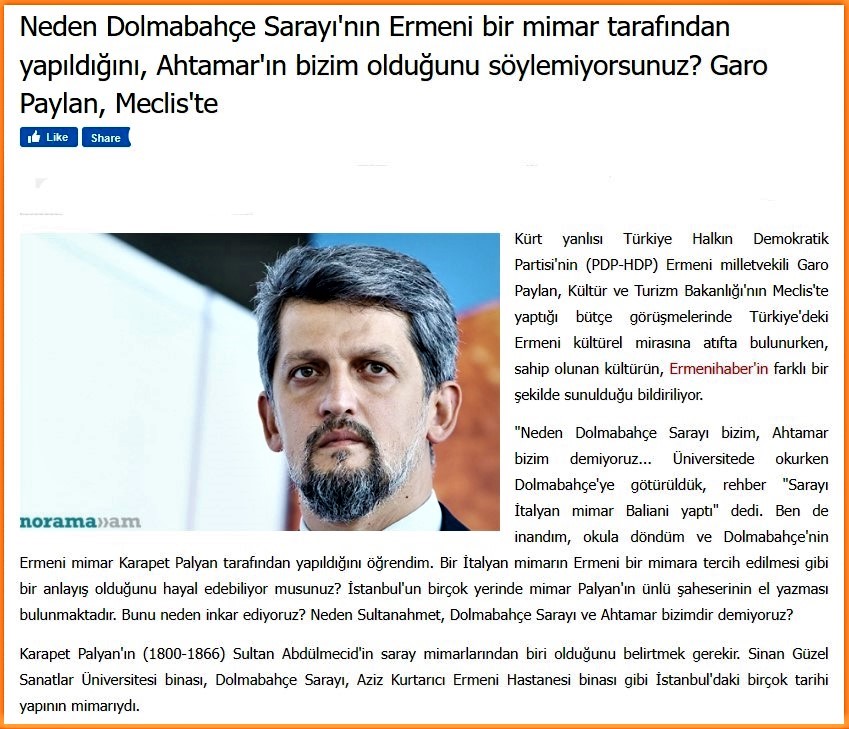
Faktyoxla Lab. has researched how valid Garo Paylan's claims are, whether Armenians built some structures in the Ottoman Empire.
First of all, the information given on the architectural education of Balyans in the art history books is not correct and contains serious mistakes. For example, Nikoghos Balyan, who went to Paris for education in 1843 and was shown as an architect in some works, returned in a short time due to his illness. Kevork Pamukciyan insists that Sarkis Balyan, who is shown as another architect, graduated from Ecola des Beaux-Arts in 1855. However, Sarkis Balyan was in Istanbul on these dates. He was in prison because of the collapse of an inn he built in Sultanahmet in 1853. It has also been documented that no member of the Balyan family graduated from the aforementioned faculty in France. One of the Balyans was Levon, the son of Nikoghos, who completed his education in Paris. He also graduated from the faculty of architecture, Sainte-Barbe, that is, a secondary education institution. There is more: In 1873, with the support of Sultan Abdülaziz, Sarkis Balyan founded the first construction company of the Empire under the name of "Şirket-i Nâfia-i Osmanî". In 1879, Kuruçeşme Island in Istanbul was allocated to Sarkis Balyan on the condition that he build a port and a factory on behalf of this company. However, Sarkis Balyan took the island out of its intended use and built a mansion and transferred it to his personal property. As a result of an investigation initiated for Sarkis Balyan in 1882 and concluded in 1886, it was determined that he embezzled a total of more than three hundred thousand liras from the buildings he built during the reign of Sultan Abdülaziz and Abdülhamid II, and as a result of this investigation, all his assets were confiscated with the lawsuit filed against him.
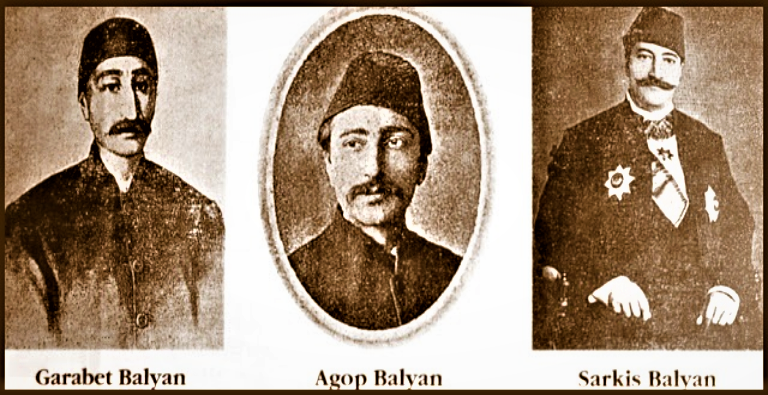
However, in October 1888, he was pardoned by Sultan Abdulhamid II through Mavroyani Efendi, the chief doctor of the palace. Moreover, attributing the architecture of Dolmabahçe Palace to Balyanlar does not match the facts. At most, Balyans may have served as contractors in some of these buildings, not architects. Who actually built the buildings that have settled in Turkiye's architectural history, and who the architects are, are revealed through research and documents. Erzurum Atatürk University, Faculty of Fine Arts, Instructor Asst. Assoc. Dr. Selman Can Hoca corrected these distorted errors one by one with his work. (Source)
In 2007, there was someone who objected to the photography exhibition "The Role of the Balyan Family in Architecture" organized by the Istanbul Metropolitan Municipality Culture Directorate with the contributions of Atlas Magazine at the Cemal Reşit Rey Concert and Exhibition Hall - Atatürk University Faculty of Fine Arts Faculty Member Assoc. Dr. Selman Can (at that time was Assistant Professor).
Associate Professor Selman Can devoted his master's thesis to this subject and also says that Dolmabahçe and old Çırağan palaces were built by the last chief architect Seyyid Abdülhalim Efendi, not by the brothers Nikaghos, Sarkis and Agos Balyan, as claimed.
Learning this fact while working on the Çırağan Palace with his teacher Prof. Dr. Nurhan Atasoy, Can speaks out loud that many of the works attributed to the Balyan brothers actually belong to the last chief architect. (Source)
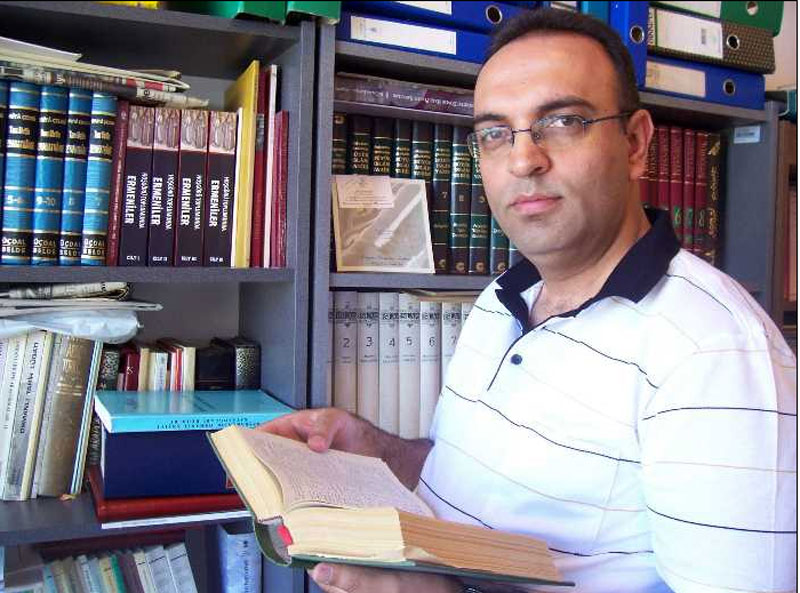
During our research, in one of the interviews made with Selman Can himself, some families such as the Balyan family, in order to create a financial source for the studies on their culture and civilizations, especially for the spread of Armenian nationalism and the formation of Armenian national identity; said that they are working in many fields. In his works, Can tried to extract the list of architects who served at the beginning of the 19th century from archival documents and, unlike a few names mentioned so far, reached very important late period chief architects and saw that their appointments were made several times: "The most important name among them is Sayyid Abdulhalim Efendi who received education in Muhendislikhane. Between 1797 and 1852, he served the Hassa Architects Association for 55 years. His first appointment as an architect to Hassa Architects' Association was made in 1824. He is o of the longest serving bureaucrats of the Mahmud II period. Due to the anger of the sultan and the change process, bureaucrats could not hold office for very long at that time. He was the architect of the fortifications in the Balkans during the Ottoman-Russian War of 1827-28, the Beyazit Tower, Ortakoy Mosque, Naval School, the Old Çırağan Palace, the first design of the Dolmabahçe Palace and the Hirka-i Şerif Mosque in Istanbul. The interesting thing is; if you asked what was about such an important architect, there was half a page of information.
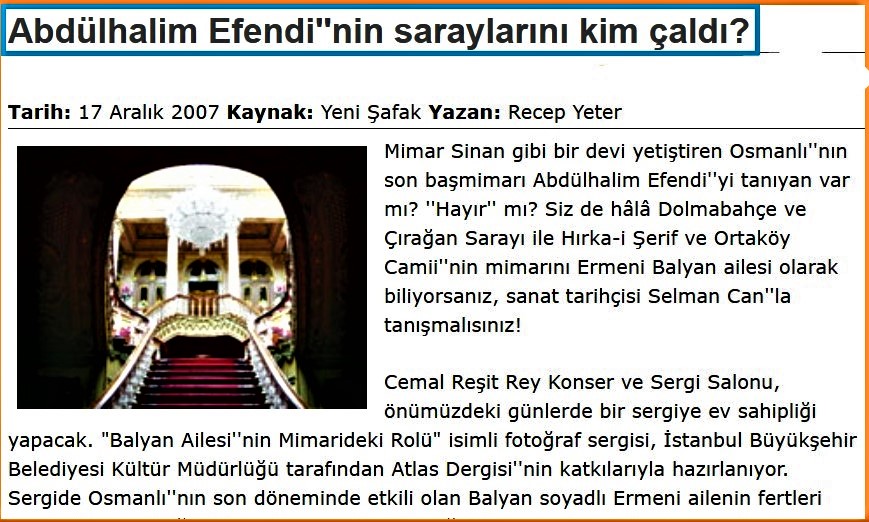
We extracted a life story from the Ottoman archives. His appointment to the first job, his later duties, his work, construction logs, information about his family. While we were producing a life story, we also saw that why the works of such an important person were not known. The reason is that his works are ascribed to other people. When we got into the business, we started to think that this was not just a lack of information and error, but that these things were deliberately hidden and covered up. Can is an architect whose theoretical aspect is heavy, whose works have survived until today, but unfortunately we do not know him. Abdulhalim Efendi, whom he described as the most senior teacher of the engineering school in 1824, was promoted to chief architect by Mahmud II. Abdulhalim Efendi, who held the title of chief architect from 1825 to 1831, is appointed as the head of the Ottoman water ministry after being sent to an administrative task in Gallipoli for a while. Famous for its aqueducts, it created many important works in the last period of the Ottoman Empire. After the abolition of the Architects' Association, the works under the authority of the chief architect were distributed in different directorates, and Abdulhalim Efendi, who was brought to the Ebniye Directorate, which is equivalent to the chief architect, was retired in 1852 as the chief architect with a 54-year architectural career. Abdülhalim Efendi died in 1855 and was buried in the Taşlifurun Lodge in Eyüp. Source

Of course, these details are not the only ones that make Abdülhalim Efendi important. Art historian Selman Can states that many of the works of the last chief architect, whom he found hundreds of documents about his life, were presented as a gift to Balyanlar or other architects 'intentionally or out of ignorance'. Among these structures are the Old Çırağan Palace, Beyazıt Fire Tower, Izmir Barracks, Kütahya Mevlevi Lodge, Ortaköy Mosque, Hırka-ı Şerif Mosque, Rami Barracks, Kasımpaşa Naval School and even Dolmabahçe Palace. Emphasizing that the seals he identified in the notebooks in the Ottoman archives belong to Seyyid Abdulhalim Efendi, Can said that Abdülhalim Efendi's works are not limited to Istanbul. He has many works in the Balkans and Anatolia.
Learning that Abdulhalim Efendi was the real architect of a few buildings, such as Dolmabahçe and Çırağan Palace, that were attributed to Balyans, Selman Can came across other works of Abdülhalim Efendi when he started to research the buildings that were attributed to the Balyan family of Armenian origin.
The most striking points that Selman Can drew his attention are as follows:
There is no simple name confusion. There is a conscious ownership of Turkey's cultural history. The result of this can reach up to a claim on our cultural heritage in the international arena, where the issue of genocide is frequently mentioned. Because those who defend the Armenian genocide say, “We do not have a numerical presence in this geography today, but we are still there culturally”. The names of Balyans, who have taken part in large-scale projects by establishing close proximity to the palace since the reign of Selim III. In our studies, we found the following.
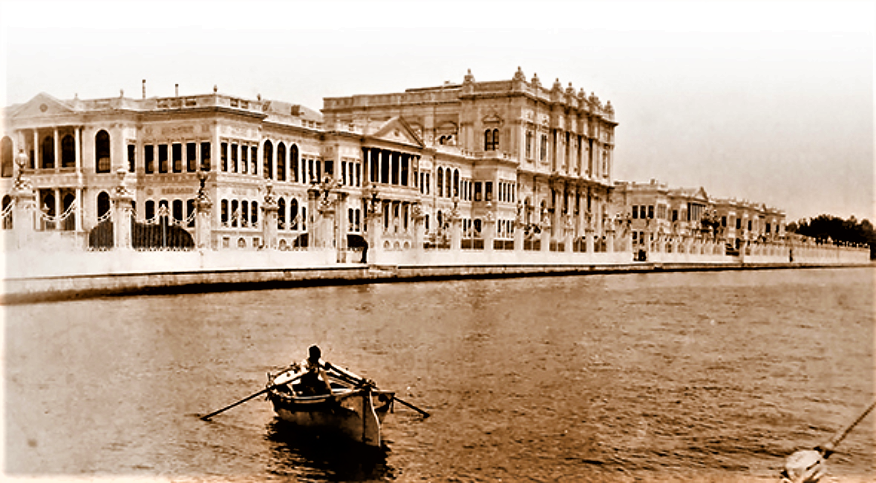
Balyans are the contractors, not the architects, in these buildings, as we have just described, in the documents of that period, there is a signature saying "I bought this building with so much money, I am the contractor". But they introduce themselves as architects to foreigners. The name of Balyans was also involved in many corruption cases at that time. For example, they registered the island of Galatasaray, which they bought to build a factory, in their heritage. Source
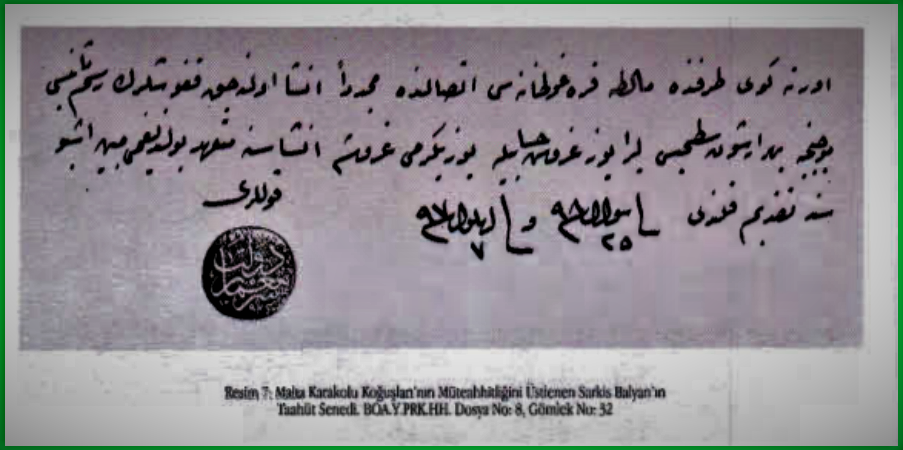
In addition, Associate Professor Selman Can Sarkis says that the undertakings signed by Sarkis Balyan regarding his constructions are clear proofs of his contracting.
Stating that the Engineer Seyyit Mehmet Tevfik seal, which is under the plans in the discovery book, shows who the real architect of the building is, the valuable researcher also draws attention to the fact that it is clearly stated that he was a contractor in the buildings he built during the reign of Sultan Abdülhamit II, in all correspondence containing corruption allegations against him. Source

Interestingly, we learn that the Bayezit Tower, which was recorded as the work of Senekerim Balyan from the Balyan family, the Rami Barracks said to belong to Kirkor Balyan, the old Çırağan palace connected to Garabet Balyan, Ortaköy and Hirka-i Şerif, which was attributed to Nikogas Balyan. According to the documents in the Ottoman Archives, its mosques were the work of Seyyit Abdulhalim Efendi, the last chief architect of the Ottoman Empire. source
Contrary to what Garo Paylan claims, the scientist who is knowledgeable on the subject states that Nikogos Balyan, who was 16 at the time, could not draw the plans of the palace, and that the archives point to Seyyid Abdulhalim Efendi, the last chief architect of the period, as the person who drew the plans of the palace. The Balyan family, which became active after the Ottoman State's architectural organization Hassa Mimarlar Ocağı was abolished, took the tender for the important construction works of the palace and this tradition continued for three generations. source
Now that the facts about the Balyans have come to light, let's come to Mimar Sinan, the architect of the historical Blue Mosque and many other important buildings. Everything is not like that, as Mr. Paylan said. It has been repeatedly researched and told by historians that Mimar Sinan, who fascinated the world with his works, was born in a Muslim village and that both his father and grandfather were Muslim Turks. The main issue underlying the claims that "The Architect Sinan was an Armenian", which are made from time to time, is to underestimate the success of the Muslim Turkish people. The historian and writer Mehmet Niyazi Özdemir, who constantly voiced this issue in his research and writings, pointed out that the idea that the successes in the Ottoman Empire actually belonged to non-Muslims and it was spread in order to create an inferiority complex in the Turkish nation, "Architect Sinan is from Kayseri and the village he was born in is not an Armenian village. His grandfather's name was Yusuf. It is known that his father is Abdullah Mennan," Doğan said.
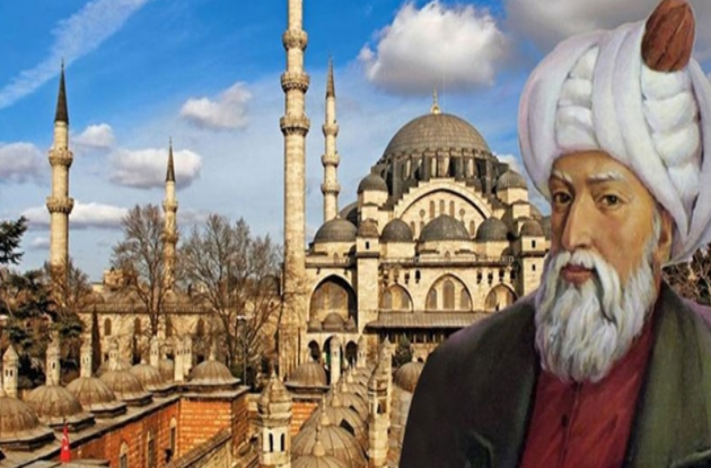
Özdemir gave the following information: "Armenians, Greeks and Jews were not recruited because they believed in the monotheistic religion before Islam. Also, in one of our sources, Cyprus was conquered when Mimar Sinan was the chief architect. People from Kayseri were sent so that the people living in Cyprus could meet the Muslim people and see and get to know their faith, culture and life. Sinan's uncle's son was among those who went to Cyprus. He wrote a letter to Sultan Selim II, but received a negative reply. From this, we understand that his uncle's son is also a Muslim." source
When the names of Mimar Sinan's relatives were misread, it was claimed that Mimar Sinan was of Armenian origin, in an ambitious decree published by historian Ahmet Refik Altınay (the order of the council of ministers of the period). In this document dated 1574, Mimar Sinan demanded that the chief architect, who was exiled to Cyprus, was born in Ağırnas village and his relatives, Sarıoğlu Döğenci from the village of Kiçi Bürngüz, and Üleysi and Kudanşah from the village of Üskübi should be stopped from being sent to the island. Üleysi is a Mongolian word meaning unique, other names are Turkish. The late Nejat Göyünc made this clear in 1985. Therefore, it is not true that the names in the document are in Armenian. In addition, when the villages where the relatives of Ağırnas and Mimar Sinan live are examined, it is understood that a significant part of the Christians living in these areas have pure Turkish names.
İsmail Hakkı Konyalı determined the Turkish names of the people living in Ağırnas in his tax register of 1584 as follows: Evren, Pervane, Bahadır, Karagöz, Aydoğdu, Aslan, Yağmur, Kumru, Sefer, Hüsrev, Arslan, Kaplan, Hüdayahşi, Kılmaz, Uğurlu, Oğuzlu, Tatar, Paşabey, Timur, Kutlubey, Sarı, Hüdaverdi, Kalender, Bayram, Borhan, Kalanlı, Karaca, Sultanşah, Urumşah, Paşa, Şadi, Karayağdı, Çakır, Bayramlı, Şemsiye, Nurullah, Yürür, Asilbey, Kutluşah, Seylanşah, Keçi, Sarıaş, Atmaca, Kademşah, Tursun, Seferşah, Murad, Emirşah, Hızırşah, Kuru, Karakoç. source
Well, how is it that Garo Paylan, who claims to have read from the sources that Mimar Sinan is Armenian, does not know that the Ağırnas village of Kayseri is Armenian?! He knows it for sure. Here are the following results:
-Garo Paylan is distorting the facts even though he knows it
-As he claims, the Balyans certainly did not build the buildings he mentioned and these claims are false,
-Balyans worked only as contractors in the construction of these buildings,
- The fact that Mimar Sinan is Armenian is completely unfounded and is proven by information.




















